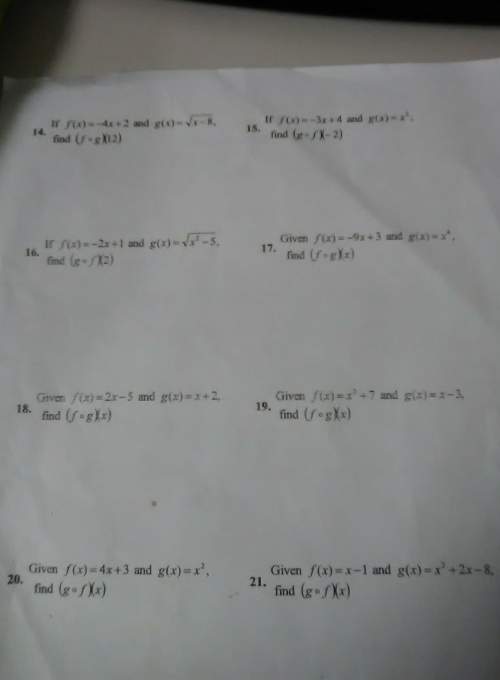
Mathematics, 15.01.2021 16:20 xojade
In ΔCDE, CE is extended through point E to point F, m∠CDE=(2x−4) ∠DEF=(6x−10) m∠ECD=(2x+16). Find, m∠DEF.

Answers: 2


Other questions on the subject: Mathematics

Mathematics, 21.06.2019 12:30, meramera50
Matt and brian were solving a system of equations. they both noticed that the two lines had the same slope. brian said that because each line in the system had the same slope, the two lines had to be parallel, which meant the solution to the system was "no solution" matt disagreed, and said they should also look at the y-intercepts before determining how many solutions there were. who is correct?
Answers: 1


Mathematics, 21.06.2019 19:50, twitter505567
How do i simply this expression (quadratic formula basis) on a ti-84 or normal calculator?
Answers: 3

Mathematics, 21.06.2019 22:30, jakails359
Atotal of 766 tickets were sold for the school play. they were either adult tickets or student tickets. there were 66 more student tickets sold than adult tickets. how many adult tickets were sold?
Answers: 1
You know the right answer?
In ΔCDE, CE is extended through point E to point F, m∠CDE=(2x−4) ∠DEF=(6x−10) m∠ECD=(2x+16). Find, m...
Questions in other subjects:

Mathematics, 26.05.2021 02:40


Chemistry, 26.05.2021 02:40


Social Studies, 26.05.2021 02:40

Mathematics, 26.05.2021 02:40







